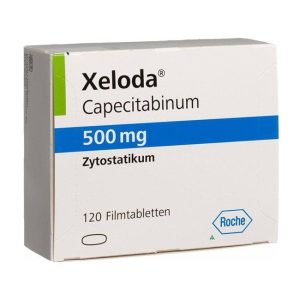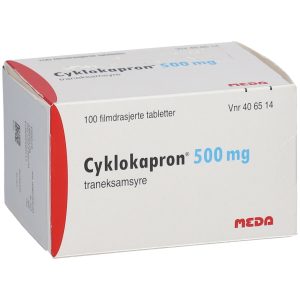Description
- From 16th till 25th day of a cycle (in a dose of 10 mg/day)
- From 20th till 25th day of a cycle (in a dose of 20 mg/day)
- From 5th till 25th day of a cycle (in a dose of 20 mg/day)
At youthful age one of the most frequent reasons for the reference of the girls to the gynecologist is dysmenorrhea. Among pathogenetic mechanisms of development of this disease the hypothesis about the low maintenance of progesterone in a lutein phase of menstrual cycle lays. Premenstrual change of parity of sexual steroids (estradiol and progesterone) accompanies the development of such processes, as a change of the rate of oxidation of free fatty acids; intensifying of emission of oxytocin, vasopressin, bradykinin, relaxin and biogenic amines in myometrium; activation of synthesis of cyclooxygenase and prostaglandin synthetase.
All the above-stated processes potentiate the formation and emission of prostaglandins. Hyperprostaglandinemia causes hypoxia and myometrium ischemia that conducts to spastic reductions of a uterus, causing an anoxic pain. At the group of girls with dysmenorrhea, at the low maintenance of progesterone in the second phase of a menstrual cycle, the new preparation from a number progestagens – “Duphaston” was applied. It is a derivative of natural progesterone, therefore is deprived of the by-effects inherent to other synthetic progestins.
Duphaston Application
Application of the preparation was carried out on one of three schemes of appointment:
- From 16th till 25th day of a cycle (in a dose of 10 mg/day)
- From 20th till 25th day of a cycle (in a dose of 20 mg/day)
- From 5th till 25th day of a cycle (in a dose of 20 mg/day)
The choice of the scheme of therapy with Duphaston has been caused by the expression of deficiency of progesterone, intensity, and firmness of a painful syndrome. As a result of the application of preparation, reliable cupping of a painful syndrome, termination of complaints of patients on discharges from sexual ways in a late lutein phase of the menstrual cycle, overall health improvement that has allowed to avoid application of analgesics has been noticed. On the background of reception of preparation, the girls did not note an increase of mass of the body, depression of libido, the occurrence of acne, hirsutism. Undoubtedly, that at the treatment of dysmenorrhea at girls with progesterone insufficiency it is necessary to prefer Duphaston as a preparation, which does not block ovulation and doesn’t influence the condition of a system of hemostasis.
Effectiveness of Duphaston
Duphaston is rather effectively applied at the endogenous shortage of progesterone in an organism, expressed by sterility at lutein failures, a premenstrual syndrome, dysmenorrhea, irregular menses, dysfunctional vulval and uterine bleedings, at a threat of premature abortion.
The active substance of Duphaston favorably differs from many other artificial progestagens by the greatest similarity with natural progesterone, not possessing anabolic, glucocorticoid, androgenic, estrogen, and thermogenic effect.
Side Effects of Duphaston
The preparation is quickly digested by the gastrointestinal tract after intake and the greatest concentration of blood in plasma reaches in 2 hours. Thus it does not change indicators of a correlogram of blood, does not break the function of the liver. The preparation selectively influences on the endometrium, normalizing its condition, does not break menstrual function, does not suppress ovulation, enlarges the possibility of conception, and warns the threat of abortion. It is from an organism through kidneys.
In some cases are possible such undesirable phenomena as headache, anemia, general weakness, pains in the field of a stomach, dermal allergic reactions, puffiness.
Duphaston is contraindicative in case of hypersensibility to components of a preparation and breat feeding is not desirable during treatment.
Application of Duphaston
Treatment of all cases of endogenous progestin failures:
- endometriosis;
- sterility, connected with lutein insufficiency;
- habitual and menacing abortion, associated with proved progestin insufficiency;
- premenstrual syndrome;
- dysmenorrhea;
- secondary amenorrhea (in combination with estrogens);
- irregular menstrual cycle;
- dysfunctional uterine bleedings;
- for neutralization of proliferative effect of estrogens on endometrium within the limits of replaceable hormonal therapy at women with the disorders bound by natural or surgical menopause at an intact uterus.
Contraindications for Duphaston
- Dubin-Johnson syndrome;
- Rotor syndrome;
- The raised susceptibility to the components of the preparation.
Application of Duphaston is possible at pregnancy under indications.
Dydrogesterone is discharged with breast milk. At the reception of preparation during feeding, it is recommended to consider the problem of termination of breastfeeding.
Special References & Indications
Before the beginning of carrying out of replaceable therapy, it is necessary to spend medical examination and gynecologic survey. Regular carrying out of mammography is recommended. Abnormal bleedings and the pathological changes observed at the gynecologic survey may form the basis for studying of the endometrium.
It is necessary to prescribe Duphaston with care in a combination with estrogens to patients’ infringements of the function of kidneys, cardiovascular diseases, diabetes, epilepsy, migraine.



Jeremy
Love Duphaston, works great for me